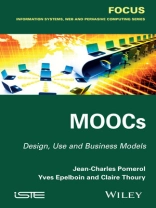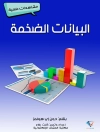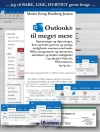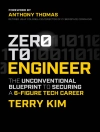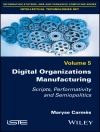MOOCs (Massive Online Open Courses) are shaking up the traditional forms of primary and continuing education and training. These new distance teaching tools which take advantage of the Web and social network revolution are making us think again about how we teach and learn.
İçerik tablosu
ACKNOWLEDGEMENTS ix
CHAPTER 1. WHAT IS A MOOC? 1
1.1. From distance learning to MOOCs 1
1.2. What is a MOOC? 5
1.3. x MOOCs, c MOOCs and other SPOCs 10
1.3.1. x MOOCs 11
1.3.2. c MOOCs 12
1.3.3. SPOCs 16
1.3.4. SOOCs 17
CHAPTER 2. HOW TO CONSTRUCT A MOOC 19
2.1. From a conventional course to a MOOC 19
2.2. Human resources for the building of a MOOC 21
2.2.1. Teaching staff 21
2.2.2. Instructional designer 22
2.2.3. Video 23
2.2.4. Graphic designers and webmasters 24
2.2.5. Integrator 25
2.2.6. Testers 25
2.2.7. Project manager 26
2.3. Steps involved in mounting a MOOC 26
2.3.1. Announcements 27
2.4. Resources required 30
2.5. Post-construction tasks 33
2.6. Amount of human resources required for the construction of a MOOC 35
2.6.1. For teachers 36
2.6.2. Teaching support staff 38
2.6.3. Technical support staff 40
2.7. Cost of a MOOC 42
2.7.1. Logistics 42
2.7.2. Software platform 42
2.7.3. Hardware platform 43
2.7.4. Human resources 45
CHAPTER 3. A MOOC FOR WHOM AND FOR WHAT PURPOSES? 49
3.1. Audiences 49
3.1.1. MOOCs at university 50
3.1.2. Lifelong learning 51
3.2. Proper use of MOOCs 53
3.2.1. MOOCs as instruments of communication 53
3.2.2. MOOCs, distance learning and initial training 55
3.2.3. MOOCs and continuing education 58
3.3. Assessment of learners and certification 58
3.4. Following of MOOCs and ‘tutored’ MOOCs 63
CHAPTER 4. FINANCING AND DEVELOPMENT OF MOOCS 71
4.1. What benefits do MOOCs bring, and what profits can be made? 71
4.1.1. In universities 71
4.1.2. Continuing education 72
4.1.3. Value of data 74
4.2. Financing of MOOCs 76
CHAPTER 5. MOOCS AND HIGHER EDUCATION 83
5.1. MOOCs and universities 84
5.1.1. What is a university? 84
5.1.2. Who is the target market for a university? 84
5.1.3. Which universities? 86
5.1.4. MOOCs in universities and the ‘educational revolution’ 87
5.1.5. The end for universities? 91
5.2. MOOCs and lifelong learning 94
5.2.1. At present, which are the largest groups of MOOC users? 95
5.2.2. Various uses for MOOCs 98
CHAPTER 6. CONCLUSIONS: WHAT DOES THE FUTURE HOLD FOR MOOCS? 101
6.1. ‘To MOOC or not to MOOC’? 101
6.2. Why and for whom should MOOCs be developed? 105
6.3. What can be done to support the development of MOOCs? 110
6.3.1. Hardware and software platforms 110
6.3.2. Encouragement of developers 112
6.4. What can be done to support the users of MOOCs? 114
6.5. A step towards digital learning houses (DLHs) 115
BIBLIOGRAPHY 117
GLOSSARY 121
INDEX 125
Yazar hakkında
Jean-Charles Pomerol is Emeritus Professor at Pierre and Marie Curie University in Paris, France and previously President of the Université Numérique des Sciences de la Santé et du Sport (UNF3S), a French-language digital university covering the fields of medicine, pharmacology, dentistry and sports science.
Yves Epelboin is Emeritus Professor at Pierre and Marie Curie University in Paris, France. He was previously head of Digital Teaching and Learning at UPMC.
Claire Thoury is a Ph D student in sociology.
